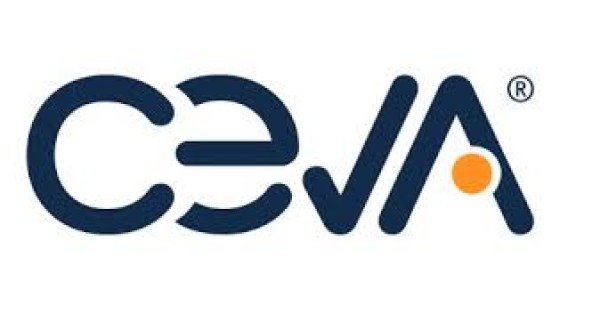– New DSPs offer scalable architecture and dual thread design with support for AI, addressing growing demand for smarter, more efficient wireless infrastructure
– High-performance Ceva-XC23 DSP delivers 2.4X improvements in performance and area efficiency for more intensive applications
– Ceva-XC21 targets cost-sensitive applications delivering up to 1.8X performance and efficiency improvements and requiring up to 48% less area
ROCKVILLE, Md., Feb. 27, 2025 /PRNewswire/ — Ceva, Inc. (NASDAQ: CEVA), the leading licensor of silicon and software IP that enables Smart Edge devices to connect, sense and infer data more reliably and efficiently, today launched its latest high-performance, baseband vector DSPs targeting advanced 5G and 6G-ready applications. Built on the successful Ceva-XC20 architecture, already in design with two Tier-1 infrastructure OEMs for 5G-advanced and pre-6G processors, these new DSPs enable faster, more efficient data processing while reducing latency and increasing throughput. Both new DSPs come with AI support, allowing customers to apply Machine Learning to optimize modem algorithm performance and network efficiency for UE and infrastructure and future-proof their designs for evolving wireless standards.
The Ceva-XC21 5G IoT DSP is designed for low-power, cost- and size-optimized cellular IoT modems, NTN VSAT terminals, eMBB and uRLLC applications. As the successor to the widely-adopted Ceva-XC4500 DSP, the Ceva-XC21 offers a size reduction of up to 48% compared to the Ceva-XC4500, and delivers the same performance at 63% of the area.
The Ceva-XC23 DSP targets regenerative NTN satellite payloads, high-end user equipment (UEs) and infrastructure baseband processing, including baseband units (BBUs), distributed units (DUs) and radio units (RUs). It provides high-performance capabilities for 5G-advanced and pre-6G applications with performance boost of up to 2.4 times and a 2.3X efficiency improvement compared to the Ceva-XC4500.
“Our latest vector DSPs represent a significant leap forward in performance and efficiency for advanced 5G and 6G applications. Building on the success of our industry-leading Ceva-XC4500, which has powered hundreds of millions of devices, these new DSPs offer a robust, future-proof platform to develop highly efficient next-generation modems and infrastructure ASICs. With AI support and programmability, these DSPs not only improve modem performance but also enable advanced AI and ML workloads, ensuring optimal network performance and efficiency towards 6G,” said Guy Keshet, vice president and general manager, Mobile Broadband Business Unit at Ceva.
The Ceva-XC21 and Ceva-XC23 DSPs are built on top of the scalable, multi-thread Ceva-XC20 architecture, offering optimized cost-power-performance for their respective end markets.
Key features include:
– Ceva-XC21: 256b SIMD vector size, single/dual thread options, and 64/32 16×16-bit MAC options
– Ceva-XC23: 512b SIMD vector size, dual thread design, and 128 16×16-bit MACs for demanding applications
Both DSPs feature:
– 5th generation Ceva-XC Communication Vector DSP Architecture
– AI support for 8-bit neural networks
– Dual threading with Dynamic Vector Threading (DVT)
– Enhanced 5G ISA for accelerated 5G channel processing
The Ceva-XC21 and Ceva-XC23 DSPs ensure seamless migration for existing Ceva-XC customers, with code compatibility with other Ceva-XC20 products and ISA compatibility with the popular Ceva-XC4500.
For more information, visit https://www.ceva-ip.com/product/ceva-xc21/ and https://www.ceva-ip.com/product/ceva-xc23/.
Availability:
The Ceva-XC21 and Ceva-XC23 will be available for general licensing by the end of the first quarter.
About Ceva, Inc.
At Ceva, we are passionate about bringing new levels of innovation to the smart edge. Our wireless communications, sensing and Edge AI technologies are at the heart of some of today’s most advanced smart edge products. From wireless connectivity IPs (Bluetooth, Wi-Fi, UWB and 5G platform IP), to scalable Edge AI NPU IPs and sensor fusion solutions, we have the broadest portfolio of IP to connect, sense and infer data more reliably and efficiently. We deliver differentiated solutions that combine outstanding performance at ultra-low power within a very small silicon footprint. Our goal is simple – to deliver the silicon and software IP to enable a smarter, safer, and more interconnected world. This philosophy is in practice today, with Ceva powering more than 19 billion of the world’s most innovative smart edge products from AI-infused smartwatches, IoT devices and wearables to autonomous vehicles and 5G mobile networks.
Our headquarters are in Rockville, Maryland with a global customer base supported by operations worldwide. Our employees are among the leading experts in their areas of specialty, consistently solving the most complex design challenges, enabling our customers to bring innovative smart edge products to market.
Ceva: Powering the Smart Edge™
Visit us at www.ceva-ip.com and follow us on LinkedIn, X, YouTube, Facebook, and Instagram.
View original content:https://www.prnewswire.com/news-releases/ceva-unveils-latest-high-performance-high-efficiency-communication-dsps-for-advanced-5g-and-6g-applications-302386986.html | SOURCE Ceva, Inc.








































